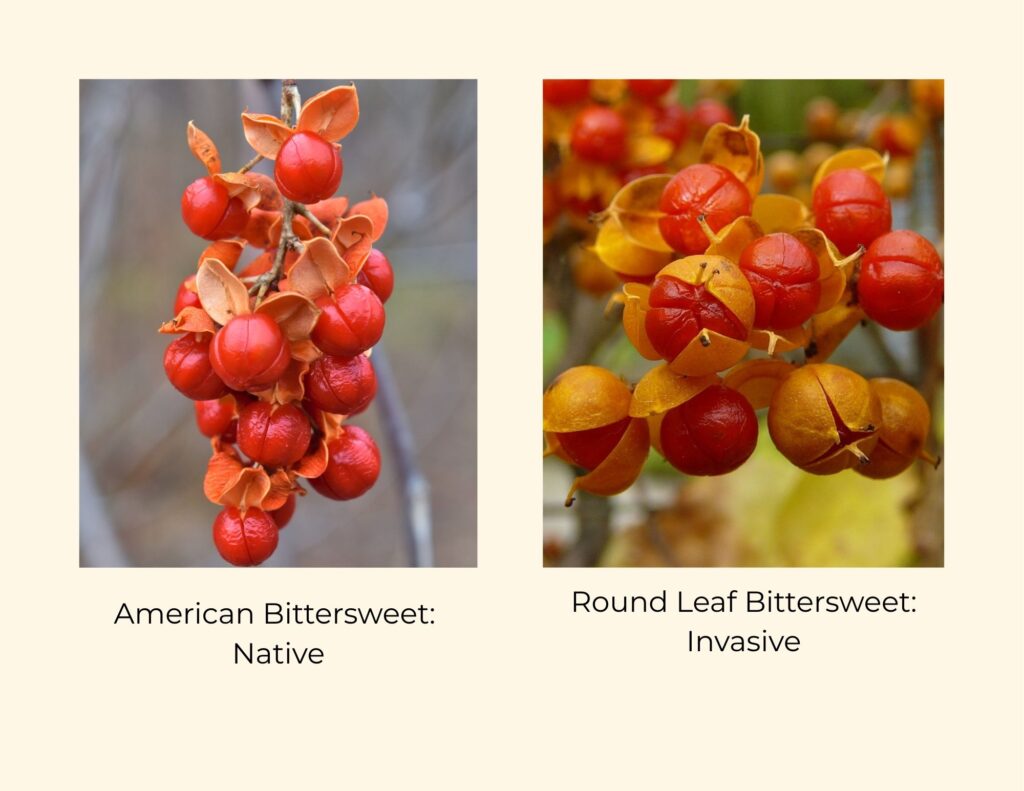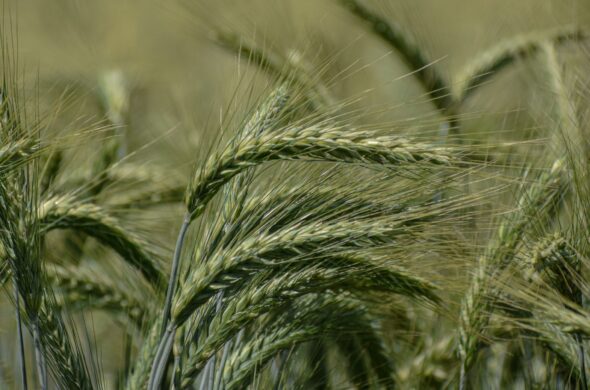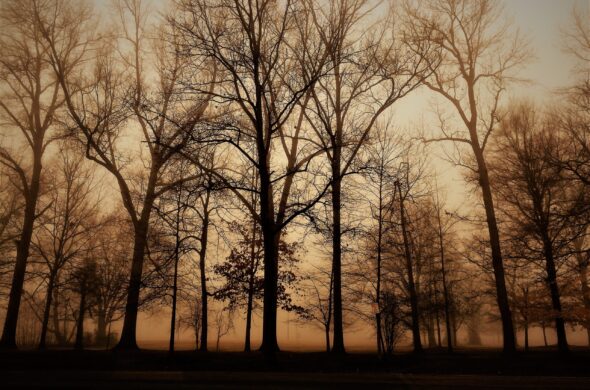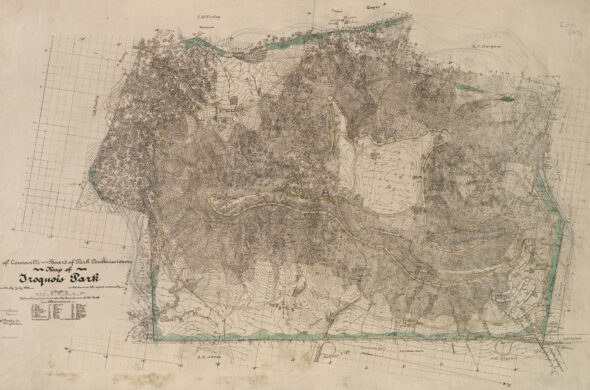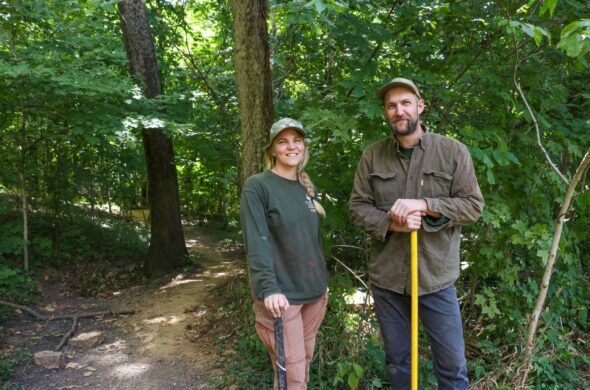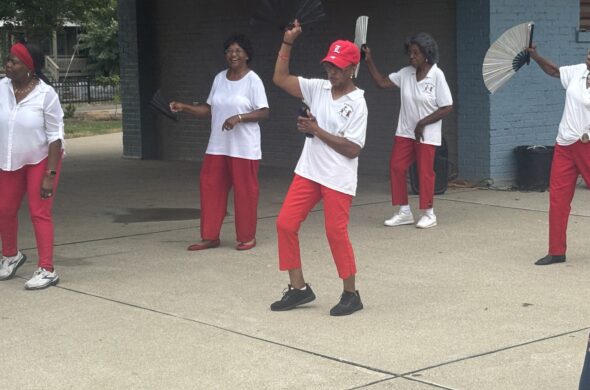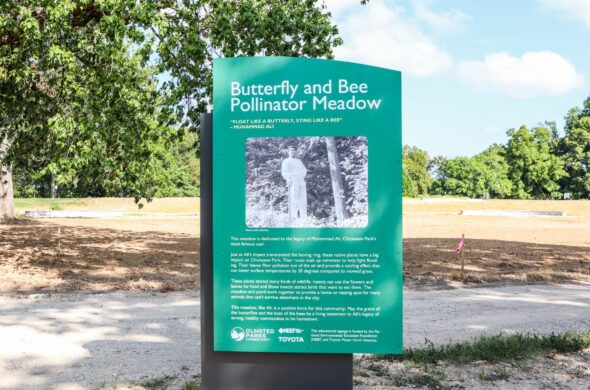In the natural areas of our parks, the Team is completing timely work to wrap up Tree of Heaven treatment for the year. This invasive tree holds onto its leaves a little longer than native trees species, which means it is also still acquiring nutrients from its environment for longer before it goes dormant.
While the Tree of Heaven leaves are still green, the native lookalikes are starting to exhibit their fall coloration. Walnuts (turning a deep yellow color) and sumacs (a fiery red, often with orange undertones) are the most common lookalikes with their compound leaf shape.
While the Tree of Heaven leaves do turn a yellowish-green before they fall, it is often described as non-existent. This differentiation in fall colors can lend itself to better tree identification from a distance, which can save time and steps if one is unsure if there is a Tree of Heaven in their midst!
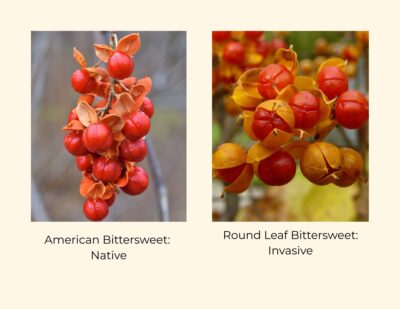
Another invasive plant that will retain green leaves longer before turning yellow is the round leaf bittersweet vine (Celastrus orbiculatus.) This vine is also starting to produce fruit, a cluster of orange berries with a yellow capsule.
Fall can be the easiest time to identify the invasive bittersweet versus the American Bittersweet (Celastrus scandens,) the native version which has orange berries with orange capsules. As suggested with the name, the invasive round-leaved bittersweet has a round leaf; opposed to the native vine which has an elliptical leaf, often thought to be shaped like a football (another sign of fall!)
Bittersweet vines and fruits can be common decoration in fall and winter arrangements, but if your arrangement features the nonnative variety, be sure to dispose of it in the trash instead of the compost to inhibit the seeds from spreading.
-Lauren Hendrickson, Natural Areas Manager
Find something similar: News
